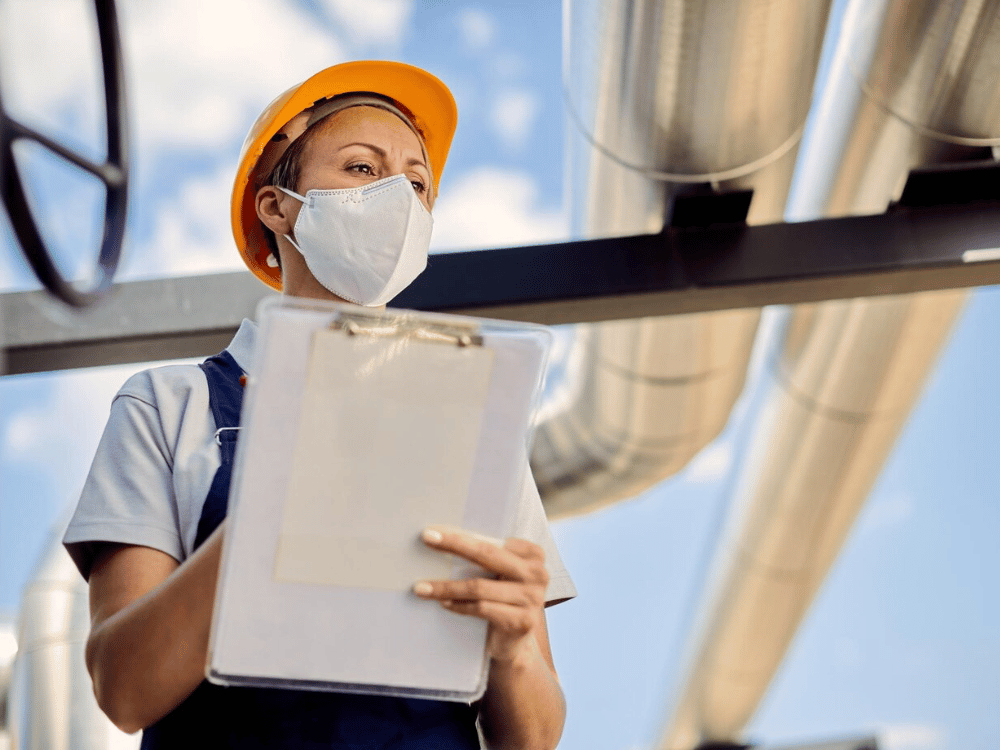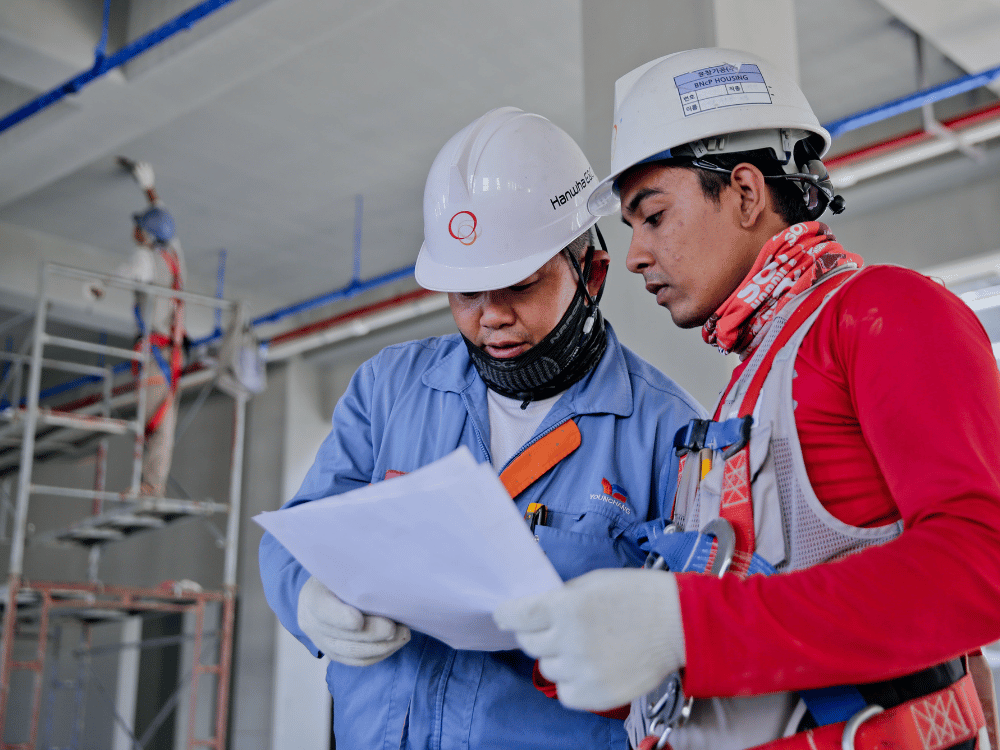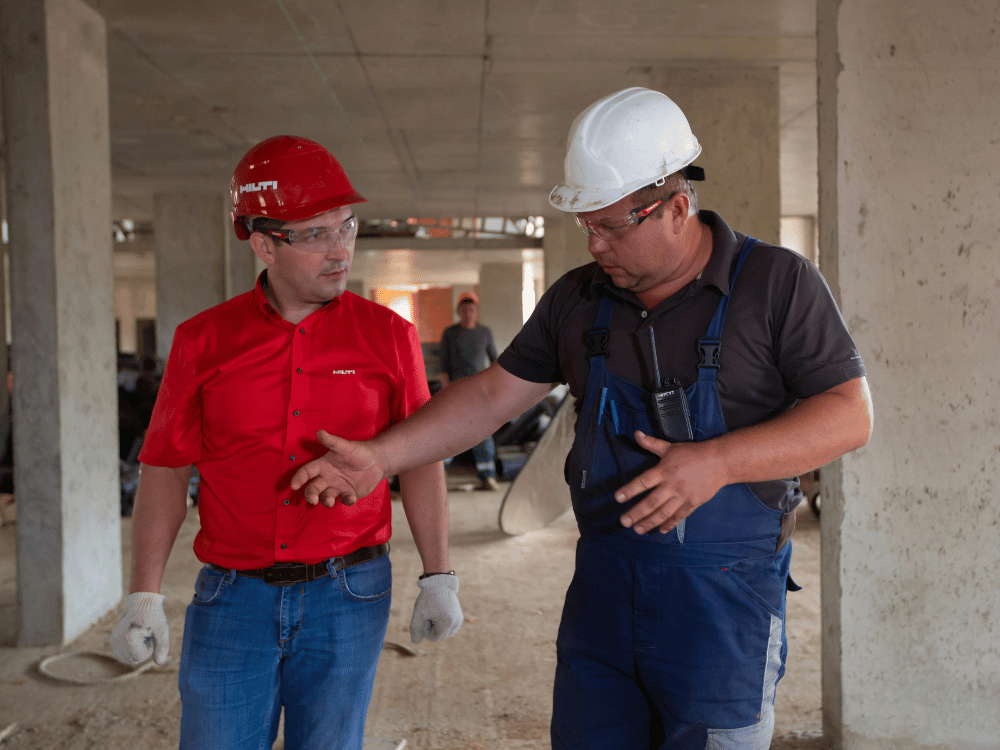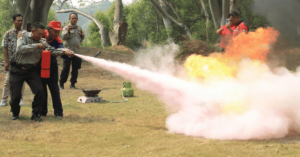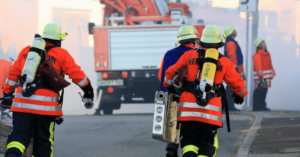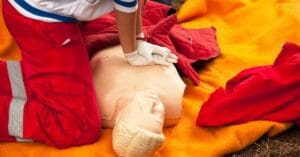The latest figures from the Health and Safety Executive (HSE) show there were 1.8 million cases of work-related new and long-standing ill-health in 2022/23. That’s higher than pre-pandemic levels.
Those striking numbers highlight just how important it is to improve the understanding of health and safety standards in your business.
One way we can start getting those figures under control is by further defining who is responsible for health and safety in the workplace.
TL;DR – Who is Responsible for Health and Safety in the Workplace?
When it comes to defining who is legally responsible for health and safety at work, the employer shoulders liability.
However, all employees have a role in creating a positive workplace safety culture.
A crucial way business owners can improve their company’s awareness and safety standards is through training.
The NEBOSH National General Certificate is a market-leading 10-day course curated to improve occupational safety and health (OSH) knowledge in employees and managers.
What is Workplace Health and Safety?
Workplace health and safety and its enforcement ensure all employees are provided with and know how to maintain a safe working environment.
Employers do hold a fundamental duty of care to provide and maintain this safe atmosphere.
However, employees and Line Managers are also responsible for ensuring safe working practices are followed throughout their sectors. This is how we start to see OSH as a cumulative effort rather than the standalone duty of the employer.
But, while slips, trips, falls (32%), and handling, lifting, or carrying (17%) made up around half of the workplace incidents last year, the regulations cover more than just physical injuries.
For example, practices and controls are also in place for managing employee mental health and reporting incidents, among other regulations.
Importance of Health and Safety in the Workplace
The HSE stats we shared earlier include details about work-related deaths in the UK. In those numbers, it shows that around 12,000 people lost their lives at work in 2022/23.
Those numbers help highlight the importance of understanding safe working practices and knowing who is responsible for workplace health and safety on your premises.
But injury aside, what else makes OSH standards so important?
- Productivity losses: Absence attached to work-related ill-health accounted for approximately 35.2 million lost working days in 2022/23.
- Financial implications: In addition to lost working days, there are also punitive actions to think about when becoming non-compliant with safety laws – alongside other financial losses.
- Reputational damage: Workplace injuries can have a stark impact on your business’s reputation. This can affect all businesses but is most prevalent in the direct-to-consumer spaces.
One example of poor health and safety affecting business reputation is the Samsung exploding phones – consumers purchased phones that would spontaneously combust.
- Employee engagement: Recent research by Gallup found a 58% difference in incident rates between businesses that do engage employees in procedural safety changes and those that don’t.
What Are Workplace Health and Safety Regulations?
As highlighted in our guide to who is responsible for workplace health and safety, several methods exist for improving your processes.
But what statutes are in place to prop up those practices?
1. Workplace (Health, Safety and Welfare) Regulations 1992
The Workplace (Health, Safety and Welfare) Regulations 1992 (WSR) cover a wide range of workplaces, excluding those in the construction, maritime or subterranean environments.
2. Health and Safety at Work Act 1974 (HASWA)
The regulations included in the Health and Safety At Work Act detail what is expected of employers when maintaining a safe environment for all occupants of their premises.
A brief overview of these duties, as detailed by the HSE, are:
- Duties of employers towards employees and members of the public.
- Duties of employees towards themselves and each other.
- Duties certain self-employed people have towards themselves and others.
However, included in the guidance are laws around elements such as risk assessments, welfare provisions, and the appointment of “competent people” to safety roles.
In addition, the HASWA regulations also define the necessity and importance of staff training in improving your safety standards. IOSH and NEBOSH qualifications are perfect for driving this development.
3. Reporting of Injuries, Diseases and Dangerous Occurrences Regulations 1995 (RIDDOR)
Under the Reporting of Injuries, Diseases and Dangerous Occurrences Regulations, the responsible person (employer or business owner) is required to keep records of:
- Work-related accidents which cause death
- Work-related accidents which cause certain serious injuries
- Diagnosed cases of certain industrial diseases
- Certain dangerous occurrences or ‘near misses’
As our guide to RIDDOR outlines, the legislation also highlights the differences between incidents, accidents and near misses.
- Incidents: An incident is an example of something which has or hasn’t happened.
- Accidents: Accidents highlight the resulting damage from incidents.
- Near Miss: Near misses are defined as when an incident occurs with no resulting damage or injury.
4. Control Of Substances Hazardous to Health 2002 (COSHH)
COSHH, or the Control of Substances Hazardous to Health legislation, puts safe practices in place for employees working with and managing biohazards in the workplace.
A quick overview of the COSHH regulations outlines that employers are responsible for protecting employees from hazardous materials while taking steps to ensure harmful substances are substituted where possible.
However, crucially, asbestos (the biggest cause of work-related deaths globally) is not included in COSHH practices.
5. Control of Asbestos Regulations 2012
Asbestos is deemed dangerous enough to have its own set of regulations, hence why the Control of Asbestos Regulations 2012 exists.
For example, 40% of workplace deaths could be attributed to either mesothelioma or asbestos-related lung cancer.
Alongside highlighting safe working practices and appropriately protecting staff from asbestos, the legislation helps define who’s responsible for preventing exposure to asbestos.
6. Personal Protective Equipment at Work 1992
On the subject of appropriate protection. The Personal Protective Equipment at Work 1992 legislation places more duties on employers.
Our guide to PPE defines responsible people should ensure that suitable PPE is available to all workers at risk of exposure to harmful substances.
7. The Health and Safety (Display Screen Equipment) Regulations 1992
It’s not just dangerous workplaces or hazardous substances that need constant analysis under the UK’s OSH laws. Office equipment calls for regular reviews, too.
The Health and Safety (Display Screen Equipment) Regulations 1992 highlight the importance of workstation analysis and outline the correct processes for postural safety.
Musculoskeletal Disorders comprised around 27% of all work-related ill-health cases in 2022/23. These regulations aim to tackle those numbers.
Employer’s Responsibilities for Health and Safety
As we have mentioned, the employer is responsible for highlighting and maintaining safety standards in your business.
Besides the obvious implications to employee health, following OSH best practices can also help employers avoid punitive action. Non-compliance with safety laws could see owners paying up to £20,000 or even being imprisoned.
But what main areas does employer responsibility cover?
Develop a Workplace Health and Safety Policy
Your health and safety policy should feature safeguarding procedures outlining how your team should react to all conceivable incidents.
Evacuation processes in your Fire Strategy Plans are a good example of emergency preparedness.
Provide a Safe Working Environment
It is the employer’s responsibility to schedule regular risk assessments to review the likelihood of incidents occurring.
These checks consider the level of risks and hazards around your premises but should only be carried out by a competent person.
In addition, safety audits review the processes in your workplace to ensure they are (and remain) as safe as possible.
Checks can also review machinery and tools to define their condition and usability.
Safety audits are also imperative for staying up to date with the latest OSH standards.
Train and Educate Employees on Safety Protocols
Employers should engage fully with staff training to maintain the highest safety standards.
Placing workers on the NEBOSH National General Certificate is an excellent way to achieve this goal and help develop your management team into competent people in the eyes of the HASWA regulations.
Employee’s Responsibilities for Health and Safety
Employers retain responsibility for health and safety around the workplace. However, Section 7 of HASWA highlights that employees also have roles to play in maintaining OSH standards.
Follow the Health and Safety Protocols
Section 7b outlines that employees should:
“as regards any duty or requirement imposed on his employer or any other person by or under any of the relevant statutory provisions, to co-operate with him so far as is necessary to enable that duty or requirement to be performed or complied with.”
Put simply, this section highlights that employees must work with employers to help maintain safe working practices.
Report Hazards and Concerns to the Management
Only the responsible person can report incidents to RIDDOR. However, employees are required to highlight any incidents, accidents, or near misses to management.
It is a legal requirement for every business with over 10 employees to have an Accident Book on the premises. This is the perfect place to begin the incident reporting lifecycle.
As a live log of workplace safety, the accident book can provide businesses and employees with information about recurring issues or incident trends.
In addition, the existence of the accident book can help prevent the non-reporting of minor incidents.
How to Assess Potential Hazards Within the Workplace and Implement Controls
As we alluded to earlier, risk assessments and regular safety audits play a large part in maintaining a safe working environment.
Passing the NEBOSH National General Certificate gives employees strong knowledge of performing risk assessments.
As a result, this qualification creates competent personnel who could be reasonably asked by the responsible person to carry out safety checks.
Robust risk assessments comprise some main components. Let’s dive further into those now.
Identify Common Workplace Hazards
Workplace hazards are defined as anything that can cause harm. From hazardous substances to the existence of asbestos to simply untidy office spaces, these visual checks overview all areas of the workplace.
Conduct Regular Risk Assessments
Regulation 3 of HASWA ensures regular risk assessments are part of OSH law in the UK. Non-compliance can result in heavy financial sanctions against businesses.
For example, a refuse collection firm was fined £1 million when a worker was killed after falling under the wheels of a reversing refuse lorry. The HSE investigation found that a suitable risk assessment had not been completed.
Generally speaking, you should be scheduling annual checks on your workspace. However, some environments may require more frequent reviews.
Construction sites, mines, manufacturing plants, quarries and other heavily industrial spaces – where the presence of habitual risk is higher – should see site reviews every six months.
It’s also good practice to conduct assessments when:
- Staff complaints or negative feedback around unsafe procedures are raised
- Changes or updates in equipment happen
- New roles are introduced
- Employees become pregnant in an environment which poses risks to them or their unborn child.
- Changes to worker’s mobility
- Incident trends begin to occur
- Changes to legislation or standardised behaviour
Implement Appropriate Control Measures
The final element of any fit-for-purpose assessment is the implementation of control measures.
Assess whether the current control procedures are up to standard. Adjustments should be made if they fall short or do not mitigate all prospective risks.
Frequently Asked Questions (FAQs)
Here are some frequently asked questions about who is responsible for workplace health and safety:
What is an Employer’s Duty of Care?
The employer’s duty of care means they must do all they reasonably can to provide a safe working environment and protect staff health.
Health and Safety at Work legislation states they should act “so far as reasonably practicable”.
What is the Main Piece of Legislation for Health and Safety?
The Workplace (Health, Safety and Welfare) Regulations 1992 apply to all industries, excluding works on construction sites, ships or mines.
However, the Health and Safety at Work Act 1974 highlights what is expected of employers in all business sectors. All of these are covered under these specific regulations:
- Quarries Miscellaneous Health and Safety Provisions Regulations 1995
- Quarries Regulations 1999
- Work at Height Regulations 2005
- Construction (Design and Management) Regulations 2007
- Health and Safety (Miscellaneous Amendments) Regulations 2002
What Must an Employer Provide under Health and Safety Law?
Under occupational health and safety laws, employers must provide:
- Appropriate facilities
- Suitable PPE (where appropriate)
- Appropriate staff training
- Appointment of competent health and safety personnel.
Conclusion
Employers are chiefly responsible for ensuring health and safety standards are met and maintained. Although, staff have certain duties to this end too.
However, business owners can ensure their team meets all these exacting standards by focusing on employee development.
Enrol your team on NEBOSH National General Certificate training with TSW Training today and boost your in-house knowledge, safety awareness and staff quality in one go.

